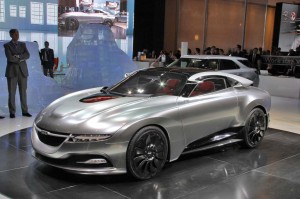
There are many questions yet unanswered, including whether the new Saab owners will resume production at the Trollhattan assembly plant.
Those hoping to save insolvent Swedish automaker Saab have gotten some electrifying news. The court administrators overseeing the company’s bankruptcy have given the green light to a Japanese-Chinese consortium that appears to focus on clean energy to buy the remaining Saab assets for a reported figure of around $250 million.
The one remaining obstacle is whether they will also get the right to the Saab name itself and the brand’s logo, which belong to defense firm Saab AB and truck manufacturer Scania AB.
What’s also uncertain is what the new owner, National Electric Vehicle Sweden AB has in mind for Saab. The firm was only recently registered in Sweden and is actually a joint venture owned by Hong Kong-based National Modern Energy Holdings Ltd., with a 51% stake, and Japan’s Sun Investment LLC.
The Chinese company has, until now, been focused on biomass power plants and related projects for China. Japan’s Sun has been funding high-tech environmental and sustainable energy programs. Neither firm appears to have any past connection to the auto industry.
Among the questions yet to be answered:
-
Will they continue producing any of Saab’s existing products, such as the 9-3, 9-5 and 9-4X model lines?
- Or will they come up with an all-new line, possibly based on the Phoenix concept and underlying platform Saab was working on at the time of last year’s bankruptcy?
- Will the new owners continue with conventional powertrains or migrate solely to electric propulsion, as the name of the joint venture implies?
- Will they remain based in Sweden and use the now idled Saab factory in Trollhattan, Sweden, generally considered one of Europe’s best?
- Or will they move operations to China, as some suspect?
An emphasis on electric propulsion seems likely, certainly based on the name of the new consortium. And a focus on China – if not an outright move to the Asian nation seems likely. Choking on its endemic pollution, the Beijing-based government has declared a policy emphasizing battery power, though sales have yet to show any real momentum.
Exactly what assets will go with the sale have not been disclosed. It is expected that the Trollhattan plant and some other physical facilities will be included along with access to the Phoenix concept and the underlying platform that was going to serve as the base for the next-generation Saab 9-3 and possibly other models.
It appears unlikely National Electric Vehicle will be able to continue producing the current model lines as former owner General Motors scuttled rescue plans for Saab last year when it refused to transfer intellectual property to several proposed Chinese partners or buyers.
After two decades struggling to turn the Swedish maker around, GM sold Saab in 2010, shortly after the U.S. company emerged from bankruptcy. But the buyer, Holland’s Spyker Automobile, turned out to be woefully underfunded and was hit by a supplier boycott in March of 2011. It was never able to resume production and several proposed rescue deals were scuttled by GM, forcing Saab into insolvency late last year.
As many as seven serious bidders reportedly emerged, though the GM snag appears to have driven some to drop out.
In the end, National Electric Vehicle reportedly offered somewhere between €165 and €200 million, equivalent to $208 to $250 million. That does not cover the Saab Museum, which was sold separately to maintain its collection, or Saab Automobile Parts AB, which has been taken over by the Swedish government.

